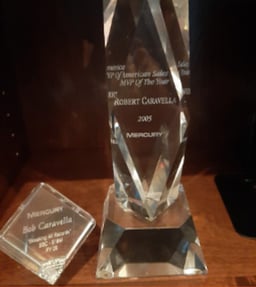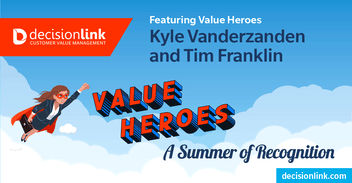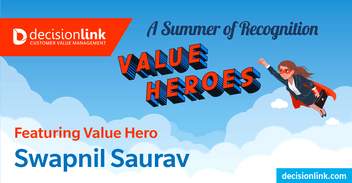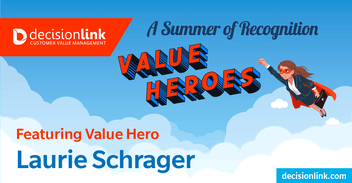Value Heroics: Bob Caravella – From Hero in a Major Deal to Hero to the Organization

Value Hero: Bob Caravella
One day in May 2005, I received an urgent phone call from a Mercury Regional Sales VP asking that I fly to Dallas for a meeting the next day with the Southwestern Bell Corporation (SBC) Senior VP Operations named Rick Felts.
Apparently, a deal estimated at ~$10M, which had been on the sales forecast for many months, was now in trouble and we were at risk of losing the deal. Originally, Rick Felts advised the Mercury sales team that he had $10M approval authority and was convinced that the Mercury solution was the way to go – he assured them that no formal business case would be required. However, a recent change in governance at SBC had taken the approval out of Rick Felt’s hands. Now, a business case was needed – one that Rick could defend in front of the SBC governance board.
Before hopping on a plane, I advised the Mercury VP that we should have a call with Rick to explain our ROI process and introduce the Mercury solution value model. Following our webex presentation, Rick agreed to have his team collaborate to build the business case. He assigned a savvy team of ROI stakeholders – senior managers who were convinced the Mercury solution (Business Availability Center) was the right answer, but frustrated that they could not quantify their Proof of Concept results in terms of value to the SBC business.
During my initial conversations with the SBC stakeholders, I learned that one of SBC’s announced strategic initiatives was to “enhance the customer experience and revamp cost structure.” As a part of this strategy, SBC had staffed over 20,000 call center representatives in 135 locations. The effectiveness and efficiency of these operations was highly dependent on the availability and performance of mission critical applications.
I also learned that the Call Centers had a formal methodology for quantifying the end user impact of outages – leading to calculation of a ‘Client Pain Factor’ indicator. As a result, I adjusted the strawman value model to leverage this indicator in the calculation of business value. The resulting model was so compelling that Rick Felts was sufficiently comfortable to not only defend the need for the original Mercury solution, but he decided to include other related Mercury solutions for application testing – leading the deal to grow from $10M to $18M (the largest deal in Mercury history).
What I was not aware of at the time was that while this deal was in process, Mercury was in the throes of negotiating its acquisition by Hewlett Packard. The $18M SBC deal was crucial for Mercury to make its number for the fiscal year, strengthening its negotiating position with HP.
Thus, I rose from being a hero for a major deal to being regarded as a hero for the organization – receiving the Americas Sales MVP award for 2005.
Epilogue: following Mercury’s acquisition by HP Software, I was asked to build and manage the worldwide Business Value Consulting practice for HP.

Throughout the summer, DecisionLink is honoring the Value Heroes of organizations as a part of “Value Heroes: A Summer of Recognition.” We are sharing Value Hero stories on our blog of leading influencers in value management, which were submitted by the value heroes themselves or by the sales professionals that they have supported. Our celebration of Value Heroes concludes on August 13 with our “Value Heroes Summit,” a town hall, virtual forum where value and sales professionals can connect, share stories and best practices and engage with like-minded professionals. Share your stories and join the conversation!

 ValueCloud
ValueCloud
.png?width=118&height=76&name=Rectangle%20(3).png) ValueCloud Ignite
ValueCloud Ignite
.png?width=92&height=92&name=Rectangle%20(4).png) Free Assessment
Free Assessment
.png?width=100&height=100&name=Rectangle%20(5).png) Watch a Demo
Watch a Demo
.png?width=82&height=96&name=Rectangle%20(6).png) Value Calculator
Value Calculator

.png?width=62&height=51&name=Group%2010%20(1).png) Marketing
Marketing
 Sales
Sales
 Customer Success
Customer Success
 Engage Prospects
Engage Prospects
 Win Deals Faster
Win Deals Faster
 Retain Customers
Retain Customers
.png?width=62&height=62&name=Rectangle%20(8).png) Adopt and Scale
Adopt and Scale
.png?width=54&height=54&name=Rectangle%20(9).png) Cybersecurity
Cybersecurity
 Healthcare
Healthcare
.png?width=54&height=54&name=Rectangle%20(10).png) IT & Software
IT & Software



